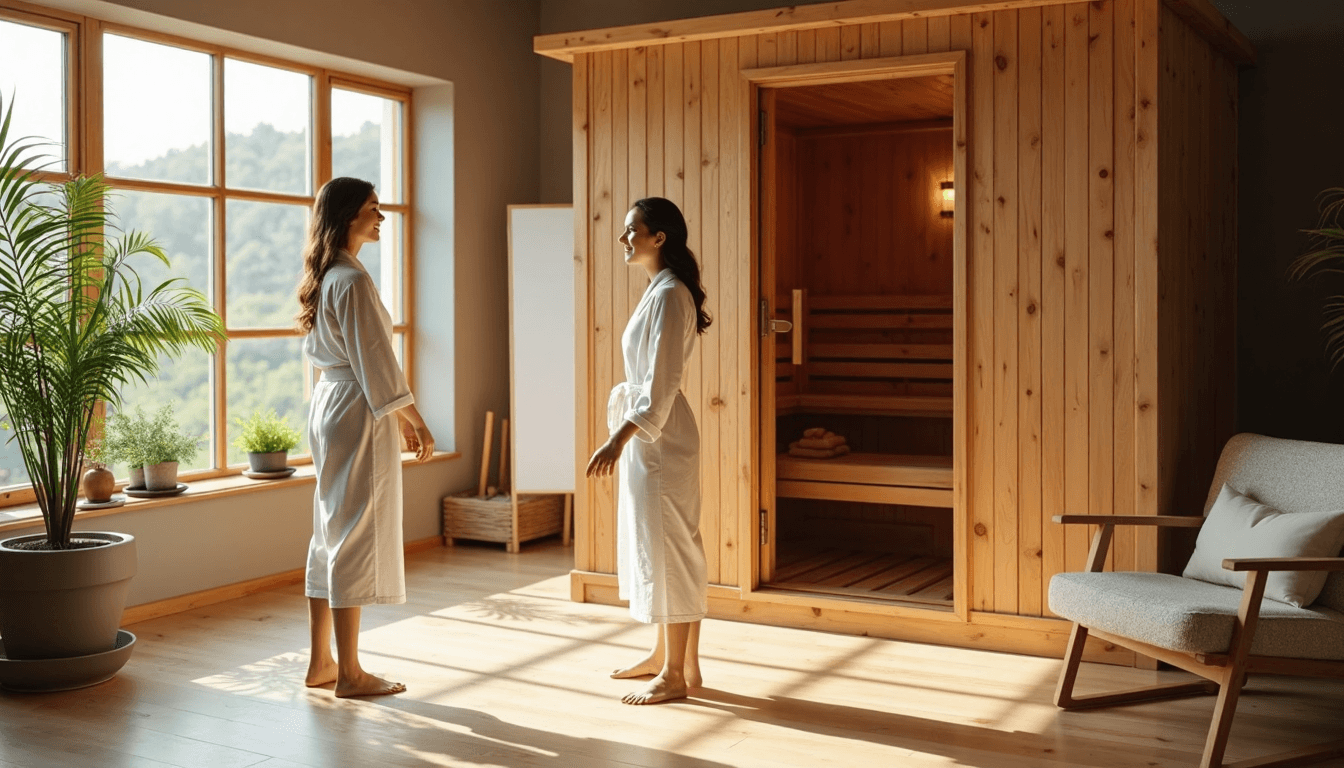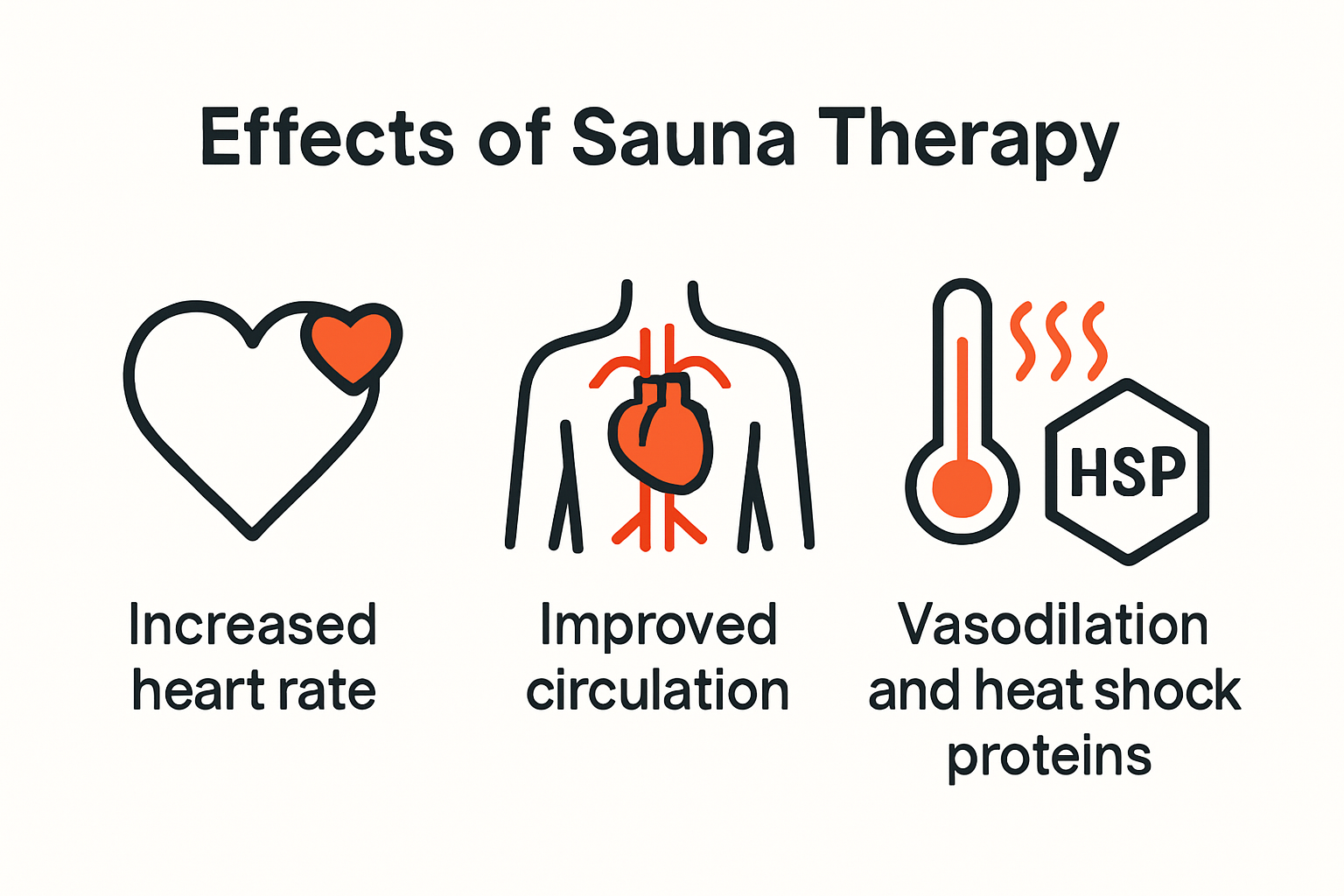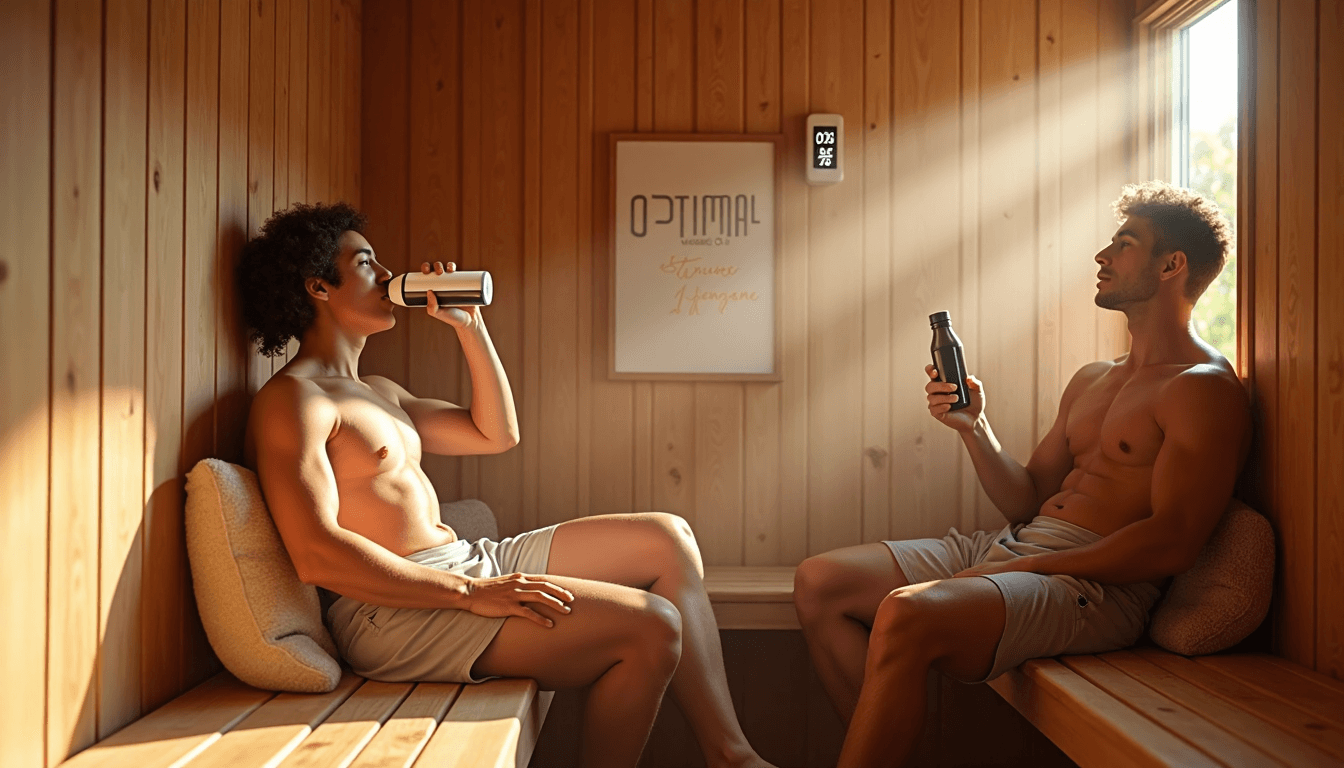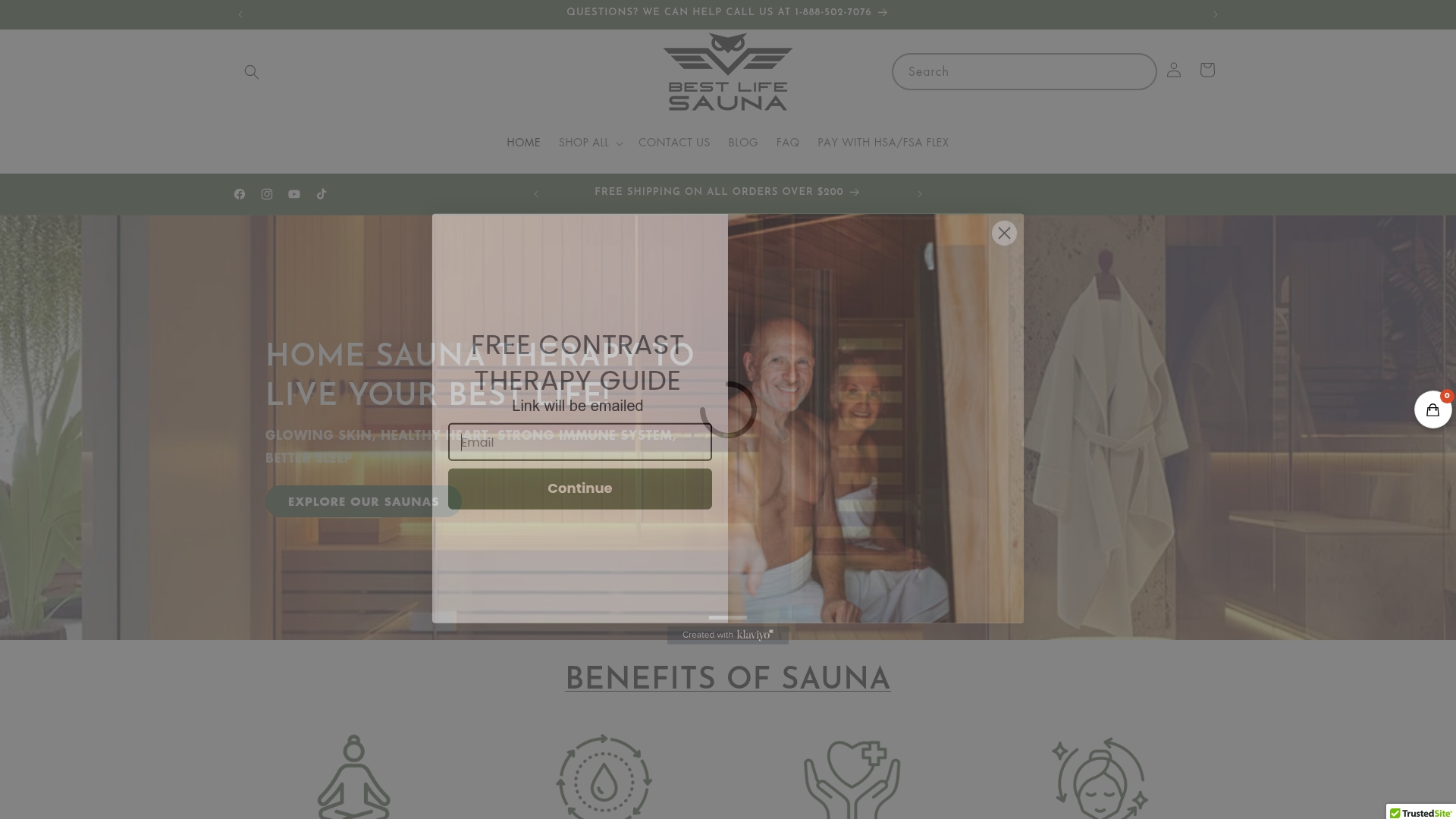
Sauna Therapy Techniques: Best Methods for Wellness 2025

Sauna therapy is taking over the wellness world, with studies showing regular sauna use can cut cardiovascular risk by up to 50 percent. Most people think it is all about intense heat and a few drops of sweat. The real surprise is that some of the most powerful benefits come from mixing sauna sessions with modern techniques like contrast therapy and precise nutrition, not just sitting and sweating.
Table of Contents
- Understanding Key Sauna Therapy Techniques
- Best Practices For At-Home Sauna Sessions
- Combining Sauna Therapy With Wellness Routines
- Choosing The Right Sauna And Accessories
Quick Summary
| Takeaway | Explanation |
|---|---|
| Sauna Therapy Offers Holistic Benefits | Regular sauna sessions can improve cardiovascular health, reduce inflammation, and provide relaxation through physiological adaptations to heat exposure. |
| Contrast Therapy Enhances Recovery | Alternating hot sauna exposure with cold water immersion boosts circulation, immune function, and muscle recovery, supporting joint health and metabolic function. |
| Hydration is Crucial for Safety | Maintaining proper hydration, including drinking water before and during sessions, reduces risks associated with heat exposure, especially for those with pre-existing medical conditions. |
| Creating an Optimal Sauna Environment | A safe sauna experience requires proper temperature management, ventilation, and comfort considerations, such as ergonomic seating and moisture-resistant materials. |
| Integrate Sauna with Wellness Routines | Combining sauna therapy with exercise and stress management practices like mindfulness can enhance physical and mental resilience for overall health improvement. |
Understanding Key Sauna Therapy Techniques
Sauna therapy represents a holistic wellness approach that has evolved from traditional healing practices into a sophisticated method of promoting physical and mental health. The core principles of sauna therapy extend far beyond simple heat exposure, encompassing complex physiological responses that can significantly impact overall wellness.
The Science of Heat Exposure and Body Response
At its fundamental level, sauna therapy works by intentionally exposing the body to elevated temperatures that trigger remarkable physiological adaptations. Research from the University of Eastern Finland demonstrates that regular sauna bathing can produce profound cardiovascular benefits. When individuals are exposed to temperatures ranging from 80–100°C with low humidity, the body initiates a series of adaptive responses.
These responses include increased heart rate, enhanced blood circulation, and significant vasodilation. The cardiovascular system essentially receives a mild workout during sauna sessions, similar to moderate exercise. Thermal stress activates heat shock proteins, which help protect cells and potentially reduce inflammation. This mechanism suggests potential long-term health benefits beyond immediate relaxation.

Contrast Therapy: Maximizing Physiological Benefits
Contrast therapy represents an advanced sauna technique that amplifies the body’s natural healing mechanisms. By strategically alternating between hot sauna exposure and cold water immersion, practitioners can stimulate more profound physiological responses. Clinical studies from the National Institutes of Health indicate this method can significantly enhance circulation, boost immune function, and accelerate recovery processes.
The rapid temperature changes trigger a robust cardiovascular response. When moving from intense heat to cold, blood vessels constrict and dilate quickly, creating a pumping action that improves overall blood flow. This technique has shown promising results in reducing muscle soreness, supporting joint health, and potentially improving metabolic function.
Infrared Sauna: A Modern Therapeutic Approach
Infrared sauna therapy represents a contemporary evolution in sauna techniques, operating at lower temperatures (45–60°C) while delivering deeper tissue penetration. Research published in the Journal of Cardiovascular Disease suggests that infrared wavelengths can penetrate more deeply into human tissue, potentially offering unique therapeutic advantages.
Unlike traditional saunas, infrared technology directly heats body tissues rather than warming the surrounding air. This approach allows for more efficient heat absorption and may provide enhanced benefits for vascular endothelial function. Individuals with lifestyle-related conditions such as hypertension or metabolic disorders might find particular value in this targeted therapeutic approach.
The complexity of sauna therapy techniques demonstrates that modern wellness practices are increasingly sophisticated. By understanding these nuanced approaches, individuals can strategically utilize heat exposure to support comprehensive health optimization. Whether pursuing cardiovascular health, stress reduction, or recovery support, sauna therapy offers a multifaceted approach to personal wellness.
Here is a comparison table summarizing the key features and benefits of the different sauna therapy techniques discussed above.
| Sauna Therapy Technique | Temperature Range | Key Mechanism | Main Benefits |
|---|---|---|---|
| Traditional Sauna | 80–100°C | High-temp air heats body via convection/radiation | Cardiovascular workout, relaxation, activates heat shock proteins |
| Contrast Therapy | Varies (Hot/Cold) | Alternates hot sauna & cold immersion | Enhances circulation, immune boost, faster recovery |
| Infrared Sauna | 45–60°C | Infrared waves directly heat tissues | Deep tissue penetration, vascular/endothelial benefits, suitable for some chronic conditions |
Best Practices for At-Home Sauna Sessions
Transitioning sauna therapy from professional wellness centers to home environments requires careful planning and understanding of safe, effective practices. Creating a successful at-home sauna experience involves more than simply purchasing equipment it demands thoughtful preparation and ongoing attention to personal health and safety.
Preparing for Safe Sauna Sessions
Healthline medical experts recommend comprehensive preparation before beginning any home sauna routine. The initial step involves consulting with a healthcare provider, particularly for individuals with pre-existing medical conditions such as uncontrolled high blood pressure, diabetes, heart failure, or abnormal heart rhythms.
Prior to starting your session, hydration becomes critically important. Proper fluid intake can mitigate potential risks associated with heat exposure. Drink at least one full glass of water before entering the sauna, and keep additional water nearby during your session. Avoid consuming alcohol or using recreational drugs, as these can significantly increase risks of dehydration and cardiovascular stress.
Designing Your Optimal Sauna Environment
Creating a safe and comfortable home sauna environment requires careful consideration of several key factors. Research from the Journal of Human Kinetics suggests that temperature and duration play crucial roles in maximizing therapeutic benefits while minimizing potential health risks.

For beginners, start with shorter sessions lasting 5 to 10 minutes, gradually increasing duration as your body adapts to heat exposure. Maintain a consistent temperature between 150-195°F (65-90°C), ensuring proper ventilation and monitoring your body’s response. Use a reliable thermometer to track environmental conditions and invest in high-quality towels, a comfortable seating area, and appropriate moisture-resistant flooring.
Below is a step-by-step table outlining best practices for managing your at-home sauna session safely and effectively.
| Step | Description |
|---|---|
| Consult Your Physician | Especially important if you have pre-existing conditions |
| Hydrate | Drink at least one glass of water before entering the sauna |
| Prepare Environment | Ensure proper ventilation, ergonomic seating, towels, and moisture-resistant flooring |
| Monitor Temperature | Keep within 150-195°F (65-90°C); use a reliable thermometer |
| Start Slow | Begin with 5-10 min sessions and increase duration gradually |
| Listen to Your Body | Exit immediately if you feel dizzy, lightheaded, or uncomfortable |
| Cool Down & Rehydrate | After the session, rest, stretch gently, and drink water to replace lost fluids |
Progressive Sauna Session Management
Successful at-home sauna therapy requires a progressive and mindful approach to personal wellness. The American College of Sports Medicine recommends developing a structured progression that allows your body to adapt gradually to heat stress.
Begin each session with a brief warm-up period, allowing your body to acclimate to rising temperatures. Listen to your body and exit the sauna immediately if you experience dizziness, excessive sweating, or discomfort. After each session, allow time for cooling down and rehydration. Consider implementing a post-sauna routine that includes gentle stretching, cool water consumption, and light rest.
Personal safety remains paramount in at-home sauna practices. While the potential health benefits are significant, individual physiological responses vary. Pay attention to your body’s signals, maintain consistent hydration, and never hesitate to modify your approach based on personal comfort and medical guidance. By approaching sauna therapy with knowledge, respect for your body’s limitations, and a commitment to gradual progression, you can transform your home into a personal wellness sanctuary.
Combining Sauna Therapy With Wellness Routines
Integrating sauna therapy into comprehensive wellness routines represents a sophisticated approach to holistic health optimization. By strategically combining heat exposure with other wellness practices, individuals can amplify physiological benefits and create a more comprehensive approach to personal health management.
Synergizing Exercise and Sauna Recovery
Research published in Evidence-Based Complementary and Alternative Medicine demonstrates significant cardiovascular benefits when exercise and sauna therapy are combined. The complementary nature of these practices allows for enhanced physiological adaptations, particularly in cardiovascular function and stress recovery.
Athletes and fitness enthusiasts can leverage sauna sessions as a powerful post-workout recovery tool. After intense physical activity, heat exposure helps muscles relax, reduces inflammation, and accelerates metabolic recovery. The increased blood circulation triggered by sauna sessions supports faster muscle repair and helps eliminate metabolic waste products accumulated during exercise.
Holistic Stress Management Integration
A comprehensive study from the National Institutes of Health indicates that integrating sauna therapy into stress management routines can significantly improve overall mental and physiological resilience. The combination of mindfulness practices, controlled breathing techniques, and heat exposure creates a powerful intervention for reducing chronic stress.
Consider developing a structured wellness routine that includes meditation or gentle yoga before or after sauna sessions. The heat-induced relaxation state can enhance the effectiveness of mindfulness practices, creating a synergistic approach to mental and physical wellness. This integrated method allows for deeper relaxation, improved emotional regulation, and potentially enhanced neuroplasticity.
Nutritional and Hydration Strategies
Clinical research from Sports Medicine highlights the critical importance of strategic nutritional support when incorporating sauna therapy into wellness routines. Proper hydration and nutrient intake can significantly enhance the physiological benefits of heat exposure and support overall metabolic function.
Develop a comprehensive approach that includes targeted nutritional supplementation before and after sauna sessions. Focus on electrolyte-rich foods, lean proteins, and hydration strategies that support cellular recovery. Minerals like magnesium, potassium, and sodium become particularly important in replacing electrolytes lost during intense heat exposure.
The art of combining sauna therapy with comprehensive wellness routines goes beyond simple physical practices. It represents a holistic approach to personal health optimization that considers the intricate connections between physical, mental, and metabolic systems. By thoughtfully integrating heat exposure with exercise, stress management, and nutritional strategies, individuals can create a powerful wellness framework that supports long-term health and vitality.
Remember that individual responses vary, and it is always recommended to consult with healthcare professionals when developing personalized wellness routines. Approach this integration with mindfulness, listening to your body’s unique signals and adapting practices to suit your individual health needs and goals.
Choosing the Right Sauna and Accessories
Selecting the appropriate sauna and accompanying accessories represents a critical decision in creating an optimal home wellness environment. The right choice can transform a simple heat therapy space into a personalized sanctuary of health and relaxation.
Understanding Sauna Types and Technologies
Research from the International Journal of Environmental Research and Public Health highlights the significant variations between different sauna technologies. Traditional saunas, infrared saunas, and hybrid models each offer unique physiological benefits and environmental considerations.
Traditional saunas utilize high-temperature air heating, typically ranging from 70-100°C, creating intense heat exposure through convection and radiation. Infrared saunas, in contrast, use electromagnetic waves to directly heat body tissues at lower ambient temperatures (45-60°C). Hybrid systems combine these technologies, providing users with more flexible therapeutic options.
Consider factors such as available space, electrical requirements, and personal health goals when selecting your sauna. Infrared models often require less installation complexity and can be more energy-efficient, while traditional saunas provide a more intense heat experience reminiscent of classic wellness practices.
Below is a comparison table summarizing the main sauna technologies and their characteristics, as described in the content above.
| Sauna Type | Heating Method | Temperature Range | Key Benefits |
|---|---|---|---|
| Traditional Sauna | High-temp air (convection/radiation) | 70-100°C | Intense heat, classic experience, robust cardiovascular and relaxation effects |
| Infrared Sauna | Electromagnetic (infrared waves) | 45-60°C | Deep tissue penetration, lower air temp, energy-efficient |
| Hybrid Sauna | Combination of air & infrared | Flexible | Offers versatility by blending both systems |
Essential Sauna Environment Control Accessories
Home Design Experts recommend that creating an optimal sauna experience extends beyond the primary heating unit. Precise environmental monitoring becomes crucial for safety and therapeutic effectiveness.
Invest in high-quality accessories that enhance your sauna experience. Specialized sauna monitoring tools like digital thermometers and hygrometers allow precise tracking of temperature and humidity levels. These instruments help maintain ideal conditions, typically between 10-20% humidity for traditional saunas and slightly higher for infrared models.
Additional recommended accessories include moisture-resistant seating, ergonomic backrests, soft towels, water-resistant lighting, and proper ventilation systems. Consider integrated sound systems or chromotherapy lighting to create a more immersive relaxation environment.
Maintenance and Long-Term Considerations
Building performance researchers emphasize that selecting a sauna involves evaluating long-term durability and maintenance requirements. Materials like Canadian cedar, hemlock, and Nordic spruce offer excellent moisture resistance and aesthetic appeal.
Prioritize saunas constructed with high-quality, sustainably sourced wood that can withstand repeated heat cycles and moisture exposure. Look for models with robust electrical components, comprehensive warranties, and modular designs that facilitate future upgrades or repairs.
Consider your specific wellness goals, available space, and budget when making your selection. A well-chosen sauna becomes more than equipment it transforms into a personal wellness sanctuary that supports long-term health and relaxation. Professional consultation can help navigate the complex landscape of sauna technologies and ensure you select a system perfectly aligned with your individual health and lifestyle needs.
Frequently Asked Questions
What are the benefits of sauna therapy?
Sauna therapy offers numerous health benefits, including improved cardiovascular health, reduced inflammation, enhanced relaxation, and better muscle recovery. Regular sauna sessions can lead to significant physiological adaptations that support overall wellness.
How does contrast therapy work with sauna use?
Contrast therapy involves alternating between hot sauna exposure and cold water immersion. This method enhances circulation, boosts immune function, and accelerates recovery, making it effective for reducing muscle soreness and supporting joint health.
What should I do before a sauna session to ensure safety?
Before a sauna session, it’s essential to stay hydrated by drinking water and consult with a healthcare provider, especially if you have pre-existing health conditions like high blood pressure or heart issues. Avoid alcohol or recreational drugs, which can increase health risks.
How can I optimize my at-home sauna experience?
To optimize your at-home sauna experience, maintain a consistent temperature between 150-195°F (65-90°C), use proper ventilation, and start with shorter sessions, gradually increasing duration. Ensure you have quality towels, a comfortable seat, and stay mindful of your body’s responses.
Ready to Transform Your Wellness Journey at Home?
Many readers of the “Sauna Therapy Techniques: Best Methods for Wellness 2025” article are seeking more than just theory. If you face challenges like creating a safe at-home sauna space, choosing between traditional and infrared options, or making the most of proven recovery techniques such as contrast therapy, then your next step needs to be practical. Maybe you are frustrated with limited wellness routines or you want reliable products that align with modern, evidence-based sauna practices. This is where Best Life Sauna steps in.

Discover a full range of premium wellness solutions, including infrared and traditional saunas, cold plunge tubs, and essential sauna accessories. See firsthand how you can combine advanced sauna methods with quality craftsmanship and dedicated customer support. With perks like a price match guarantee, free shipping offers, and positive customer reviews, now is the time to upgrade your wellness journey. Visit Best Life Sauna to explore our solutions and start building the optimal sauna environment you deserve. Your path to holistic wellness, improved recovery, and daily relaxation begins here.

